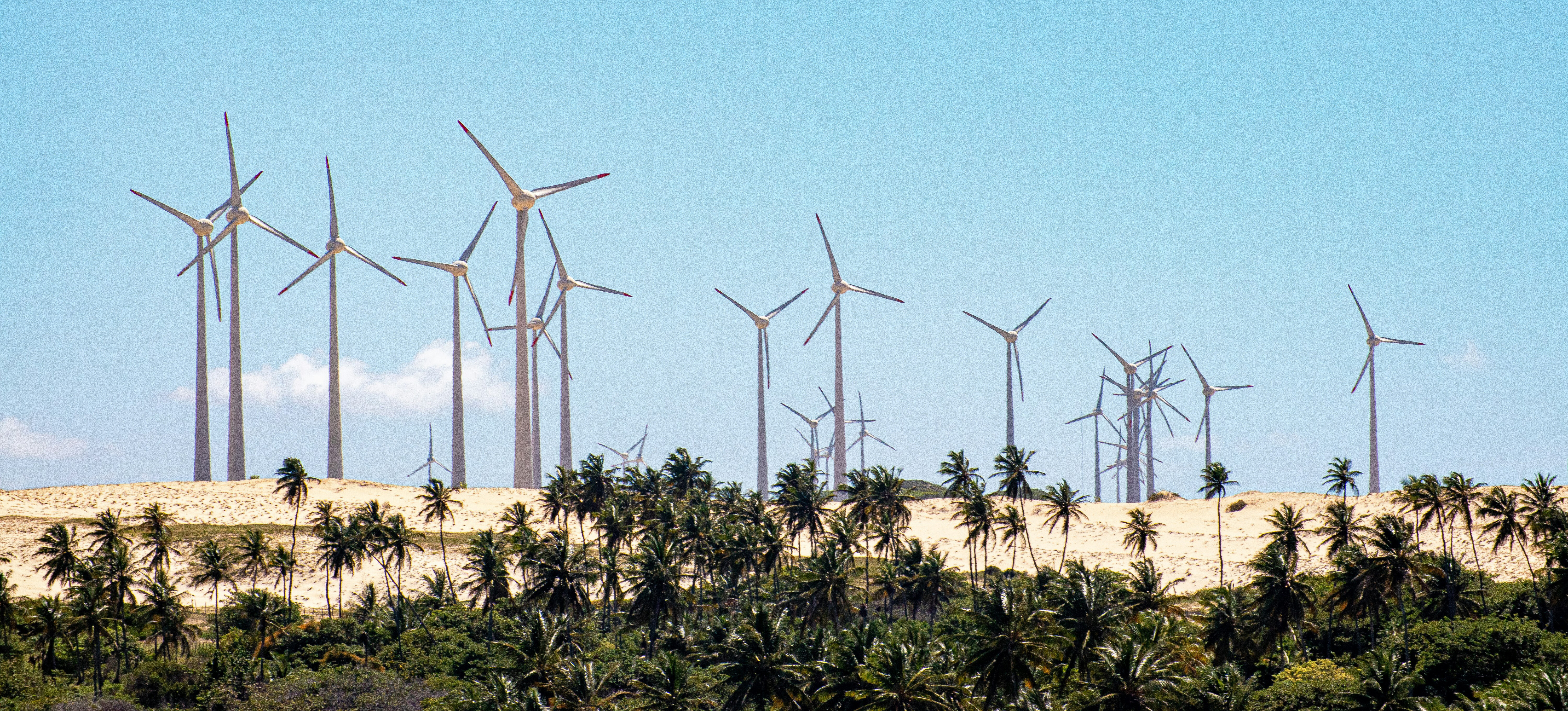How China became a climate leader

Stay up to date:
Future of the Environment
In what some might consider a surprising development, China – currently the world’s largest emitter of carbon dioxide – is emerging as a global leader in climate policy as it seeks to build a cleaner and more efficient economy. Indeed, China’s efforts to curb pollution and environmental destruction, while shifting to a more sustainable growth model, can provide valuable lessons for governments worldwide.
The first step toward sustainable economic growth is to recognize, as China’s leaders have, that pollution – produced largely through coal-fired power plants – is profoundly damaging citizens’ lives and livelihoods, particularly in major cities like Beijing and Shanghai. Moreover, greenhouse gas emissions are contributing to climate change, the effects of which, as the Intergovernmental Panel on Climate Change warns, could prove devastating for all countries, with China highly vulnerable.
Moreover, China is already the world’s largest oil importer, and energy demand continues to increase rapidly. As a result, energy security has become a serious issue.
In this context, the authorities’ effort to accelerate the shift of China’s growth model to one that is more innovative, inclusive, efficient and sustainable represents the only feasible way forward. The good news is that some progress has already been made, innovation is occurring rapidly and clear plans are being formulated and implemented.
China is now the world’s largest investor in clean energy, with a record $68 billion channelled towards renewable energy development in 2012 and another $54 billion last year. Furthermore, its non-fossil energy supply more than doubled from 2005 to 2013 while the CO2 intensity of GDP fell by 28%. And China’s reliance on coal-based energy is decreasing, with the rate of decline targeted to accelerate.
But much more needs to be done. Over the past eight years, China’s economy has grown by an average of 10% annually – a total increase of around 115% – leading to a 53% increase in CO2 emissions. Fortunately, China’s government recognizes the need to pursue more stable, higher-quality GDP growth. At the same time, given slower growth in world markets and the challenges of domestic structural adjustment, the annual growth target has been reduced, to around 7.5%.
These structural adjustments are aimed at reducing China’s dependence on heavy industry and manufacturing exports while fostering domestic consumption, promoting higher-tech activities, and strengthening the services sector. This shift will naturally bring about a decline in demand for energy-intensive raw materials like iron, steel and cement; at the same time, it will better equip China for the next stages of its development.
To support these efforts, China will build generating stations that rely on natural gas, nuclear power and renewable sources. The government has already pledged $286 billion to renewable energy development and $376 billion to energy conservation projects in 2011-2015. Investment in coal-fired electricity generation has been shrinking year on year since 2005.
As a result, by 2020, China’s consumption of energy generated from sources other than fossil fuels will be roughly equivalent to Japan’s total energy consumption. Non-fossil energy sources will comprise 15% of China’s overall energy mix, reaching 20-25% by 2030. Beyond that, such sources will meet all further growth in energy demand.
Along with more stringent restrictions on coal consumption and greenhouse gas emissions, the forthcoming 13th Five-Year Plan, for 2016-2020, will include additional investment in research and development. With this mixture of policies, Chinese carbon emissions could peak by 2030, even as the economy grows at a rate of 4-5%. Coal consumption is likely to peak by 2025.
These targets may be ambitious, but they are entirely achievable. In fact, with a sufficiently strong commitment from policy-makers and businesses, China could reach its clean energy goals ahead of schedule. Indeed, moving to a path that offers a reasonable chance of preventing the average global temperature from rising more than 2 degrees above the level reached in the late 19th century (the established international goal) requires that other countries, too, accelerate progress.
This transformation promises not only to benefit the environment, but also to create new sources of economic growth and employment opportunities. The Chinese dream of a billion citizens living in thriving cities – with access to high-quality education, job opportunities in high-tech industries and a thriving services sector – can become reality.
And the benefits will not be limited to China. Other countries can learn from China’s experience through observation and collaboration. At the same time, they can benefit from the technological advances and cost reductions that Chinese investment in renewable energy research and deployment is enabling. Finally, China’s deepening commitment to sustainability could improve the chances that the United Nations climate conference in Paris in 2015 will produce a global agreement.
The global nature of environmental challenges creates an important opportunity for international cooperation based on shared interest. Such cooperation should extend beyond emissions-reduction targets to technology transfer, knowledge sharing and economic opportunity. Rich-country policy-makers, in particular, should bear in mind this imperative, given their economies’ history of high emissions and greater access to technology.
While China’s economic transformation is vital to its long-term prosperity, it is one – albeit important – step toward mitigating the massive risks associated with climate change. Lasting progress will require a similar commitment from governments worldwide.
Published in collaboration with Project Syndicate.
Authors: He Jiankun is director of the Energy, Environment and Economy Research Institute at Tsinghua University.
Nicholas Stern, a member of the British House of Lords, is a professor at the London School of Economics and Political Science, vice-chair of the Global Commission on the Economy and Climate, and president of the British Academy.
Image: A man wears a mask while walking on a bridge during a hazy day in Shanghai’s financial district of Pudong. REUTERS/Aly Song
Don't miss any update on this topic
Create a free account and access your personalized content collection with our latest publications and analyses.
License and Republishing
World Economic Forum articles may be republished in accordance with the Creative Commons Attribution-NonCommercial-NoDerivatives 4.0 International Public License, and in accordance with our Terms of Use.
The views expressed in this article are those of the author alone and not the World Economic Forum.
Related topics:
Forum Stories newsletter
Bringing you weekly curated insights and analysis on the global issues that matter.
More on Energy TransitionSee all
Why India’s carbon market needs a price stability mechanism for its new Carbon Credit Trading Scheme
Subham Shrivastava and Saurabh Trivedi
November 10, 2025
Andrea Willige
November 10, 2025
Network of the Global Future Councils and Kaiser Kuo
November 4, 2025
Esther Finidori and Lisa Wee
November 4, 2025
Ezgi Canpolat and Varalakshmi Vemuru
November 3, 2025
Ayla Majid
October 30, 2025





